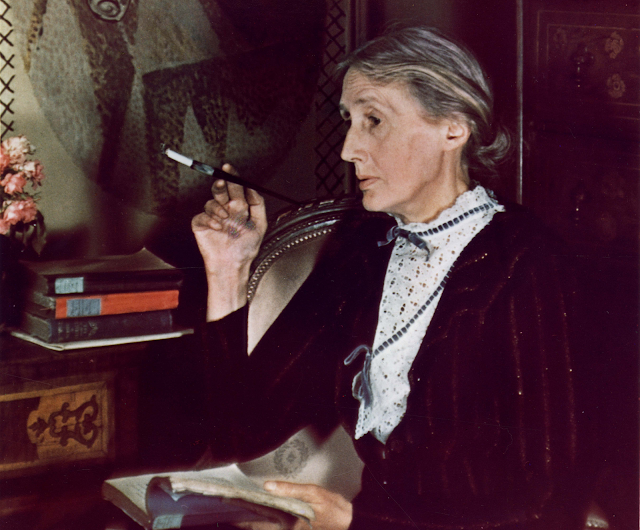
The English poet William Shakespeare, known by many around the world by last name alone, was born closer to the end of the sixteenth century. Shakespeare is credited for authoring 20 facts, 27 plays, and 375 poems in his 52-year lifetime extent. During the sixteenth century scientists like Gerardus Mercator and Conrad Gessner for example, made findings that contributed to the idea historians have today about the Scientific Revolution occurring at the cusp of the Renaissance period. The science of the time was largely comprised of cartography, and language studies. As one might expect, in a time of great discovery the economic climate in Europe was in expansion, following two centuries of decline (Britannica). Perhaps it was only natural for a man from the United Kingdom to gravitate toward authorship, and become renowned for quotes like, “To be or not to be” (Hamlet 3.1.56).
Fast forward 313 years after the passing of Shakespeare, Woolf delivers an essay about the lack of equal access in the human experience for women in the canon A Room of One’s Own, a compilation of essays. It opens with a blasé blasé opinion that colors the disparities for women both now and in the Elizabeth era as tired as time itself. Through sarcasm, or better reverse psychology, the remedy as prescribed by this author to treat the fatigue of enquiry, is to is to stop trying to prove the fact, “women are poorer than men,” (41) and simply ask a historian.
Adeline Virginia Woolf was seven years of age when her mother died near the turn of the 20th Century. Her father, a scholarly man, did not allow her to attend school for a formal education. Instead the ‘Victorian-principled,’ ‘man of letters,’ allowed for private tutors, but it was Adeline who took her education into her own hands. It’s worth noting that the relationship between Adeline [Virginia] and the rest of her family was troubled. Both her mother and her father had children from previous marriages. Perhaps most tragic of all is that Virginia was abused sexually by her maternal step brothers starting from the time she was six years old extending into her early 20’s. Woolf suffered from mental illness and ultimately committed suicide in 1941. Her depression exacerbated by the sudden passing of her youngest brother Thoby in 1906. Woolf taught at the women’s college and began writing in 1905. Woolf’s father died two years prior to Thoby, though “she viewed his [Leslie] passing as a liberation.” (Lovelady 1).
In the essay A Room of One’s Own, Virginia Woolf wants critics of literature to share the sociological feministic view of concerning the lack of literary works of fiction authored by women. The problem she lays out has to do with the cultural expectations for women as well as the societal practice to restrain women from leading a self-sufficient, self-reliant life. After all it wasn’t until 1919 that Congress passed a measure to permit woman’s suffrage in the United States1. Still the idea that anybody in Shakespeare’s day could have had the level of influence of Shakespeare himself is moderately conceded as Woolf argues, “for genius like Shakespeare’s is not born among laboring, uneducated, servile people.” (48).
While it is true that William Shakespeare had sisters, William Shakespeare is perhaps a special case, but Woolf is making a case in this essay. Lifestyles for women in the Elizabethan era, Victorian era, and arguably the Edwardian era too left women without a room of their own.
Woolf challenges the reader to defend or respond to this sentiment. How can someone write fiction if they cannot grasp the idea of freedom Woolf argues?
The stupendousness of this excerpt is that it really speaks to how Virginia Woolf is thinking and what she would say. Appreciating the rhythm of rhetoric is important in understanding the key issues posed. The reader has a sensation that they’re not really reading the text, they’re having a conversation. The essay was originally derived from an abbreviated lecture review of two extended papers, “too long to be read in full.” (Harcourt Brace Jovanovhich)
Virginia had a sister named Vanessa that was also a published writer. The two grew up in a similar environment. Despite the disagreements Vanessa may have had with her sister she did care for Virginia. Toward the end of Virginia’s life, it was her husband and her sister that encouraged her to step away from work in order to address her depression. Despite growing up in a similar environment, Vanessa’s writing comes across as less harsh than Virginia’s. In a biography about Woolf, Viviane Forrester characterizes their upbringing as, “an atmosphere of incest” (Youngkin 554).
Virginia Woolf was married to Leonard Woolf. Her credibility on feminism in today’s view of inclusion might have even stronger criticism with consideration to her anti-Semitic behavior. Being an ethnically Jewish person Leonard Woolf’s own mother was not invited to Virginia and Leonard’s wedding. Another extreme example that might make feminists frown is the unsisterly act of Virginia to “’spoil her sister’s marriage’ by flirting with Vanessa’s husband, Clive Bell” (Youngkin 553).
The key takeaway from the text is that Virginia Woolf herself demands autonomy. Perhaps selfishly, but she demands it for all women. She upset with the status quo; she begs the reader to understand the complexities in women’s everyday lives. She addresses the absence of equality when it comes to being free enough on the outside, to be able to express the inside in an unconstrained environment. Being able to write fiction, according to Woolf, would require one to have their own room; William Shakespeare’s sisters were not free to explore and therefore didn’t have the same opportunities to be a quotable genius.
Works Cited
- Lovelady, Cambria. “Virginia Woolf.” Virginia Woolf (9781429814997), Aug. 2017, pp. 1–2.
- Youngkin, Molly. “Woolf & ‘Taboo Questions’.” Book Reviews, pp. 553-556
- Shakespeare, William. “Hamlet, Prince of Denmark.” Complete Works of William Shakespeare, pp. 1079-1126. HarperCollins Publishing, 1994
- Gharib, Susie. “The Interweaving of Color and Theme: Purple and Blue in the Works of D.H. Lawrence and Virginia Woolf.” Critical Essays, 2019, pp. 182-188
- “The Emergence of Modern Europe, 1500–1648.” Encyclopædia Britannica, Encyclopædia Britannica, Inc., https://www.britannica.com/topic/history-of-Europe/The-emergence-of-modern-Europe-1500-1648.
- Woolf, Virginia. “What if Shakespeare had had a sister?” A Room of One’s Own. Harcourt Brace Jovanovich. 1989.
- Abcarian, Richard, Marvin Klotz, and Samuel S. Cohen. Literature: The Human Experience. Boston: Bedford/St. Martins, 2019. Print.
